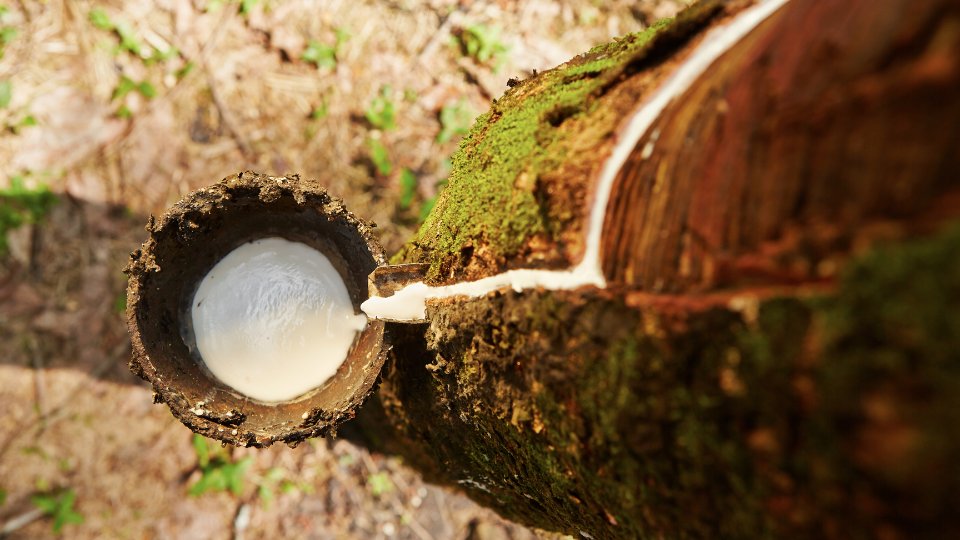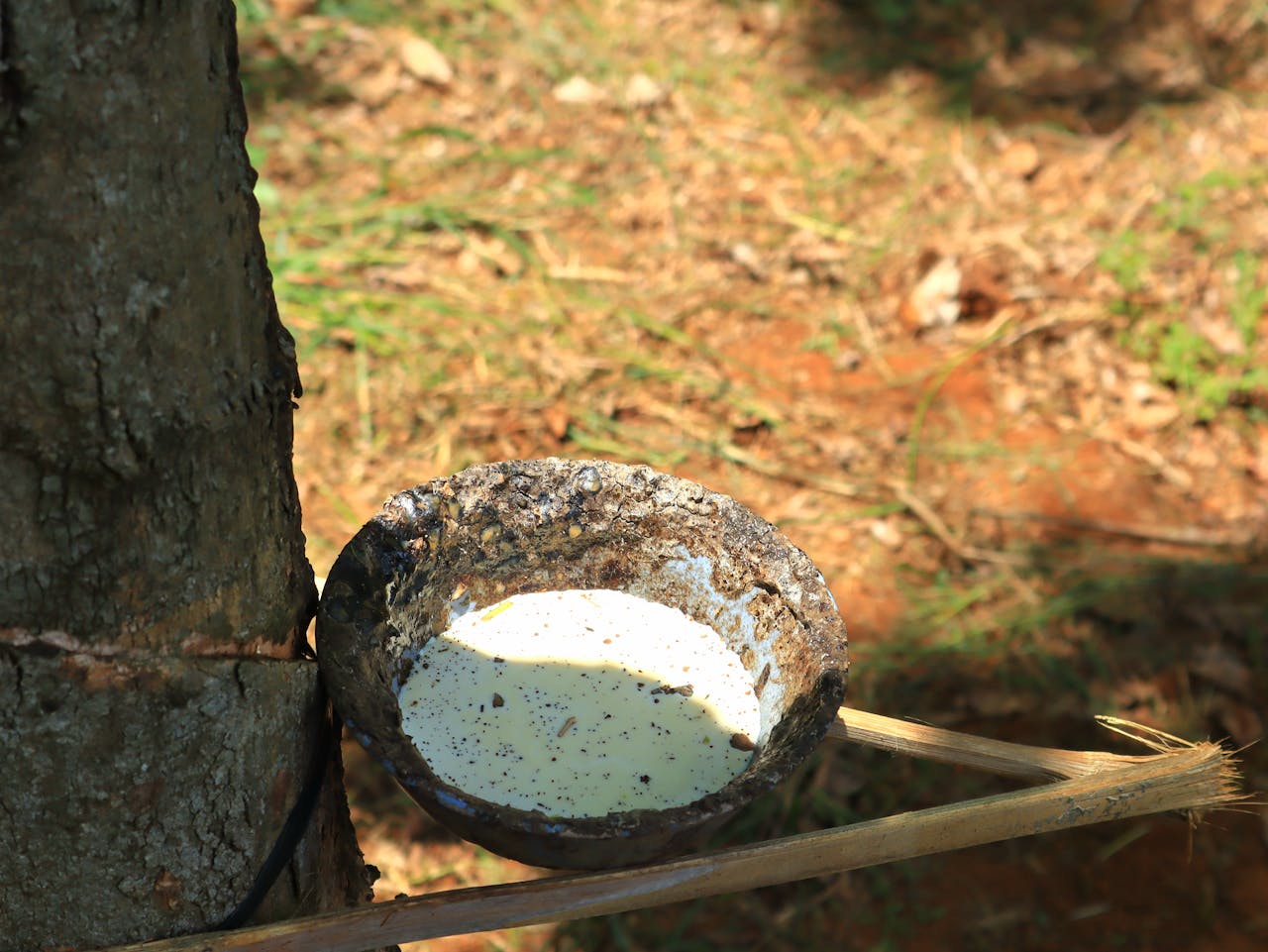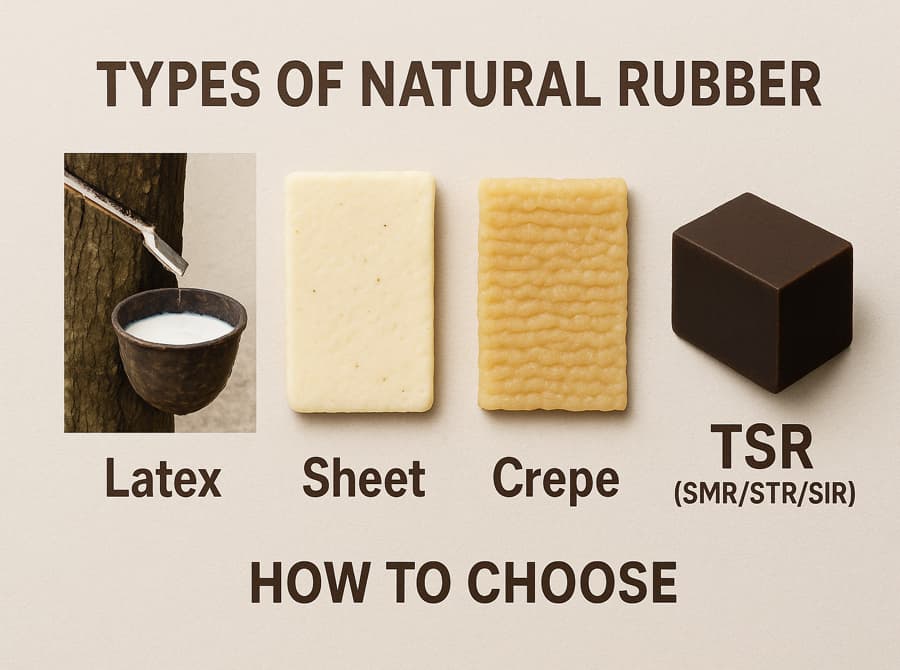Rubber—both natural and synthetic—is among the most versatile materials in engineering, manufacturing, and everyday products. Understanding where and how different rubbers are used, and what properties are needed, is essential for engineers, procurement specialists, and students alike.
Major Rubber Types & Property Variations
Here are some common rubber families and how their properties differ:
| Rubber Type | Strengths | Typical Weaknesses |
|---|---|---|
| NR (Natural Rubber) | Excellent tear resistance, high elasticity, good fatigue-life, low heat build-up | Poor ozone/UV resistance unless protected; limited oil/fuel resistance |
| SBR (Styrene-Butadiene Rubber) | Good abrasion and general wear; lower cost | Lower high-temperature tolerance; moderate aging |
| NBR (Nitrile Rubber) | Strong oil/fuel resistance; good mechanical strength | Poor ozone/UV; lower weather resistance |
| EPDM | Excellent weather, steam, ozone, UV resistance; good outdoor durability | Poor oil/fuel resistance; limited adhesion for certain applications |
| FKM / Fluoroelastomers | High temperature / chemical resistance; excellent sealing properties | Cost; handling and process requirements are more demanding |
| VMQ (Silicone) | Wide temperature range; food/medical safety; flexibility | Lower mechanical strength; more expensive |
| CR (Chloroprene) | Balanced oil/ozone/weather resistance; moderate performance | Moderate cost; less specialized than some synthetics |
| IIR (Butyl Rubber) | Low gas permeability; excellent sealing | Lower tensile strength; limited abrasion resistance |
This sets the stage for matching use-cases.
Application Domains & Use-Cases
Below are representative uses of rubber, the demands placed on material in each case, and which rubber types are often chosen.
| Domain | Common Uses | Key Material Requirements | Often Used Rubber Types |
|---|---|---|---|
| Automotive & Transportation | Tires, engine mounts, vibration isolators, belts, seals | High fatigue life, abrasion resistance, temperature swings, chemical/oil exposure | NR+carbon black, SBR, NBR, FKM for high-heat sealing parts |
| Sealing, Gaskets & Hoses | O-rings, pipe seals, fuel hoses, hydraulic hoses | Compression set, sealing against leakage, chemical/temperature exposure | NBR, FKM, EPDM, sometimes silicone for food/medical hoses |
| Industrial Equipment & Machinery | Conveyor belts, vibration pads, rollers, dampers | High wear resistance, mechanical strength, durability under load | SBR, NR, CR, sometimes synthetic blend or reclaimed rubber |
| Electrical & Insulation | Wire/cable insulation, insulating mats, gloves | Dielectric strength, flame resistance, thermal stability | Silicone, EPDM, some synthetic types with fillers |
| Consumer Goods & Footwear | Soles, mats, straps, toys | Comfort, flexibility, abrasion, odour, safety | NR, SBR, silicone (for premium) |
| Medical, Food & Hygiene | Medical seals, tubing, gloves, food contact surfaces | Biocompatibility, low toxicity, sterilizability, regulatory compliance | Silicone, certain FDA/USP approved rubbers, low-protein NR latex when acceptable |
| Construction & Infrastructure | Roofing membranes, expansion joints, weather seals, dampening pads | UV, ozone, steam/weather resistance, long service life | EPDM, silicone, CR, some modified natural rubbers |
Performance Demands by Application
To specify appropriately, identify the environmental and mechanical stresses:
- Temperature extremes: continuous vs peak; cold brittleness; heat aging
- Chemical exposure: oil/fuels, acids/bases, solvents; duration and concentration matter
- Mechanical load & fatigue cycles: repeated flexing, compression, abrasion
- Exposure to ozone / UV / weather / moisture
- Static vs dynamic; high strain vs small deformation
Design & Material Selection Guidelines
When choosing rubber for a given use:
- Define your application profile: media, temp, mechanical loads, environment.
- Ask suppliers for data: tensile strength, elongation at break, hardness (Shore A/D), compression set, abrasion resistance, aging (ozone, UV, heat).
- Confirm process compatibility: molding/extrusion vs continuous flex; minimum bend radius; adhesion issues.
- Consider cost vs performance trade-off: premium rubbers cost more but may reduce maintenance/downtime.
Trade-offs & When Rubber May Be Unsuitable
Rubber is excellent, but not always the optimal choice. Consider these limitations:
- Poor performance in very high temperatures (beyond limits of FKM/silicone)
- Damage by strong chemicals/solvents not designed for that rubber type
- UV or ozone damage if protective additives are absent
- Cost constraints vs simpler materials
- Dimensional stability under static load over long periods (creep, compression set)
Case Study Examples
- Automotive hose: selecting an NBR hose requires balancing oil resistance, heat cycling, flex fatigue; if used in engine bay, FKM or hybrid compound may be required.
- Roofing sealant: EPDM works for weather/UV; ensure thickness, crosslink density, and UV stabilizer content to prolong life.
- Medical tubing: silicone or specially certified rubber; need documented compliance and good clarity / low extractables.
Sustainability & Regulatory Considerations
- Regulatory compliance: food/medical ratings (FDA, USP, EU EC), environmental safety (RoHS, REACH)
- End-of-life: can rubber be recycled / devulcanized? Are there reuse programs?
- Natural rubber harvesting impacts / synthetic rubber carbon footprint
Practical Checklist for Procurement & Design
- ✅ Application demands table
- ✅ Key performance specifications list
- ✅ Rubber type vs environment mapping
- ✅ Supplier data & certifications required
Conclusion
Different uses of rubber demand different property combinations. Understanding the specific use-case (environment, mechanical stress, regulatory regime) allows choosing the correct rubber type, avoiding failures, reducing maintenance, and optimizing cost/performance.
FAQ
- What rubber is best for extremely high temperatures?
Fluoroelastomers (FKM), some silicone grades; check supplier thermal aging data. - Is rubber good for food contact or medical use?
Yes—if it meets regulatory standards (FDA, USP, EU, etc.) and has low extractables/proteins. - Can rubber be used underwater or for contact with chemicals?
It depends on the rubber type: EPDM and certain synthetics handle water well; others resist chemicals depending on their formulation. - Does rubber degrade over time outdoors?
Yes—UV, ozone, temperature cycles degrade rubber. Use protective additives and select appropriate types.
Sources & References
- ASTM D412 (Tensile Testing of Vulcanized Rubber)
- ASTM D2240 / ISO 48-4 (Hardness Testing)
- Industry data sheets (manufacturers of EPDM, FKM etc.)
- Regulatory standards for FDA, REACH etc.


